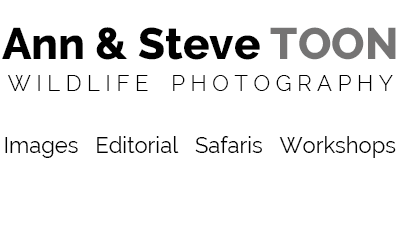Every so often in wildlife photography things just seem to ‘click’ into place. That was the case earlier this year during our visit to the Kgalagadi Transfrontier Park (KTP) in South Africa when we spent a very happy morning photographing a pride of lions in the Nossob riverbed. One of our images from that morning’s haul has just received an award in this year’s ‘Nature’s Best Photography Africa’ competition; the continent’s most prestigious wildlife photography contest. (You can see all the 2017 winning images here). Here’s the story behind our successful shot in this year’s competition…

Winning image. Canon EOS 1DX, 1/800sec, f/8, ISO 320, 500mm lens plus 1.4x converter
It was one of those mornings when you manage to cross paths with a great subject at just the right time; when the light’s still very usable. One of the many reasons we love photographing in the KTP is the fact you can often follow the same animals for days; learning their routes and routines. The Kalahari’s famous lions are a case in point. The excitement begins with a just a handful of paw-prints in the sand and then, if, and when, we catch up with our quarry, due to the wonderfully open terrain, it’s possible to document our subjects’ behaviour intimately; setting active subjects off to great effect against a stunning background wash of semi-desert hues.

We picked up the same pride on several occasions
We’d been following one pride with five sub-adult cubs for several days. The adult members of the pride liked to sit on the face of a favourite dune and we’d managed to pick them up there on a couple of mornings. Sometimes the youngsters would join them; sometimes they weren’t to be seen.
On this morning we’d suddenly found ourselves with front row seats as the whole pride, both adult members and their boisterous, almost ‘teenage’ cubs, were reuniting after a night on the prowl. As you might imagine there was much running around with lions coming in from every direction off the nearby dunes.
With so much going on it was difficult to predict where to manoeuvre our vehicle for the best. Anticipating which individual subjects to follow with a camera can be a nervy gamble. Even with two of us keeping an eye on the developing situation we truly were spoiled for choice. We were anxious we’d get it wrong and end up with a wonderful memory of the unfolding episode, but nothing on our memory cards to back it up.
In a situation with lions it’s always tempting to follow the photogenic males – even more so in this case as they were two stunning black-maned bruisers. We’d photographed the same pair a few days earlier as they walked side by side on the sand like brothers in arms, so we knew they were potentially the best prospect. But with the sun now rising higher in the sky we decided to break with convention and placed all our bets on the youngsters instead.

Big brothers. It was a tough decision to leave these guys and stick with the younger lions
We reckoned the experienced big males would soon be headed for the shade. Probably not much chance of anything new on the photo front there. There’s usually only a slim window of time and good light to make interesting behavioural shots before lions disappear into cover to sleep as the day hots up. Getting cleanly composed images in sweet light is always a challenge.

Staying with the group of cubs was a gamble. Would it pay off?
The hyperactive cubs, on the other hand, too stupid for their own good, were still wandering aimlessly out in the open, clearly frustrated by the adults’ sober pace. Rather than resting up in the shade (obviously not quite cool enough for juvenile big cats) they seemed content to stay out in the riverbed. The pastel colours of the distant dunes dropped off perfectly. We could see they provided an ideal complementary background for the sort of entertaining antics we were hoping for. We were now staking everything on shots of the young lions playfully interacting. But would they oblige?

Gotcha! Lion cubs hone ambush moves that will help their survival when fully-grown
Just as we expected they soon began taking their pent up predatory frustration out on each other; ambushing each other, chewing each other’s tails and sparring in mock combat in that way that tearaway young lion siblings always will – sooner or later – rehearsing moves that would one day make all the difference to their survival in this unforgiving eco-system.

Getting your teeth into it. A sibling’s tail at the sharp end of one cub’s canines
Sometimes following your instinct about a wildlife subject pays dividends. Good fortune plays its part too of course, but don’t underestimate hard-earned knowledge picked up along the way. Because at times like these you realise those endless hours spent observing your subjects’ behaviour, without a decent image for your effort, really isn’t really a waste of time at all, but a worthwhile investment you can cash in later.

Let’s make up. Time for a friendly head nuzzle after the fighting

